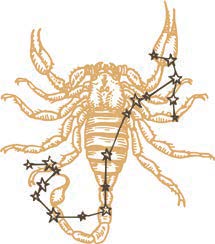
Just new stuff
By Clyde Edgerton
I’m in the bleachers watching baseball practice. My youngest son, 11, has just started playing — this is his second practice ever — and so far, he likes it. After the first practice, we shopped for equipment, and I hear some of you already thinking: Why does Papadaddy always gripe about high prices?
The answer is this: I didn’t buy anything between 1994 and 2012, until I finally started shopping for my children’s sporting equipment.
But on the softer side — the nostalgic side — this baseball business is taking me back, in good ways, to over 60 years ago. “Yep,” I say to my son, “I started playing baseball when I was 9 years old.”
“What?” he says, “They had baseball back then?”
When I was 10 or 12, our coach worked at a local funeral home and drove a hearse to practice. I can see the hearse as it pulled onto the field near first base — long, shiny, and black. This is all true. My friends and I would open the swinging rear door and pull out a canvas bag of bats, a handbag of baseballs, and a large duffle bag with the catcher’s equipment and bases and the little plastic things held together with stretch bands that we fitted over our ears when batting. These flimsy head protectors became the norm in the late ’50s, as I recall. (Protective head gear was a consequence of mid-century political correctness.)
While we were shopping a few weeks ago, my son and I inspected batting helmets, baseball gloves — for fielding and batting — bats, baseballs and a protective cup. The protective cup comes with a pair of fancy black underwear to hold the cup in place. The reason my son is expected to buy his own equipment these days is because if, say, a funeral home bought a bag of, say, 20 baseball bats, then the funeral home could be out four grand. Easily. Check it out at your local sporting goods store.
In addition:
My son’s bat: metal. Ours: wooden.
My son’s headgear: a hard plastic helmet. Ours: (early on) a cloth cap.
My son’s cleats: plastic or rubber. Ours: steel.
My son’s batting gloves: two. Ours: none.
My son’s “protection”: a plastic cup. Ours: underwear (most of us, I guess).
My son’s fielder’s glove: synthetic, stiff, and complicated. Ours: leather, limber, and plain.
My son’s infield surface: mostly grass. Ours: mostly dirt.
My son’s outfield surface: grass. Ours: mostly dirt.
My son’s pitching mound: raised. Ours: flat.
My son’s dugout: concrete behind a fence. Ours: a wooden bench, in the open — with splinters.
My son’s coach: loves the game. Ours: loved the game.
I’m so glad the game is the same. Three strikes, four balls, three outs. Secret signals and hidden ball tricks, balks, walks and home runs. Timing, speed and precision. It’s still best to step on the base with your inside foot, watch the third base coach as you approach second base, start with your glove on the ground to catch a grounder. And the playing field itself — it expands outward from home plate. Unlike football, basketball and other sports, boundaries exist on only two sides of a baseball field, not all four sides. Hit a home run and the ball could travel all the way around the Earth and roll up behind home plate and still be in fair territory.
After the second practice, we’re gathering up equipment to head home. My son says, “Dad, they make a backpack for gloves, helmet and all that. It has two sleeves for two bats. We could get one at Dick’s along with another bat.”
“If we get another bat, we’ll have to sell your bicycle, the trampoline and your bunk bed.”
“You mean . . . like a yard sale?”
“Sure. Good idea.” PS
Clyde Edgerton is the author of 10 novels, a memoir and a new work, Papadaddy’s Book for New Fathers. He is the Thomas S. Kenan III Distinguished Professor of Creative Writing at UNCW.





